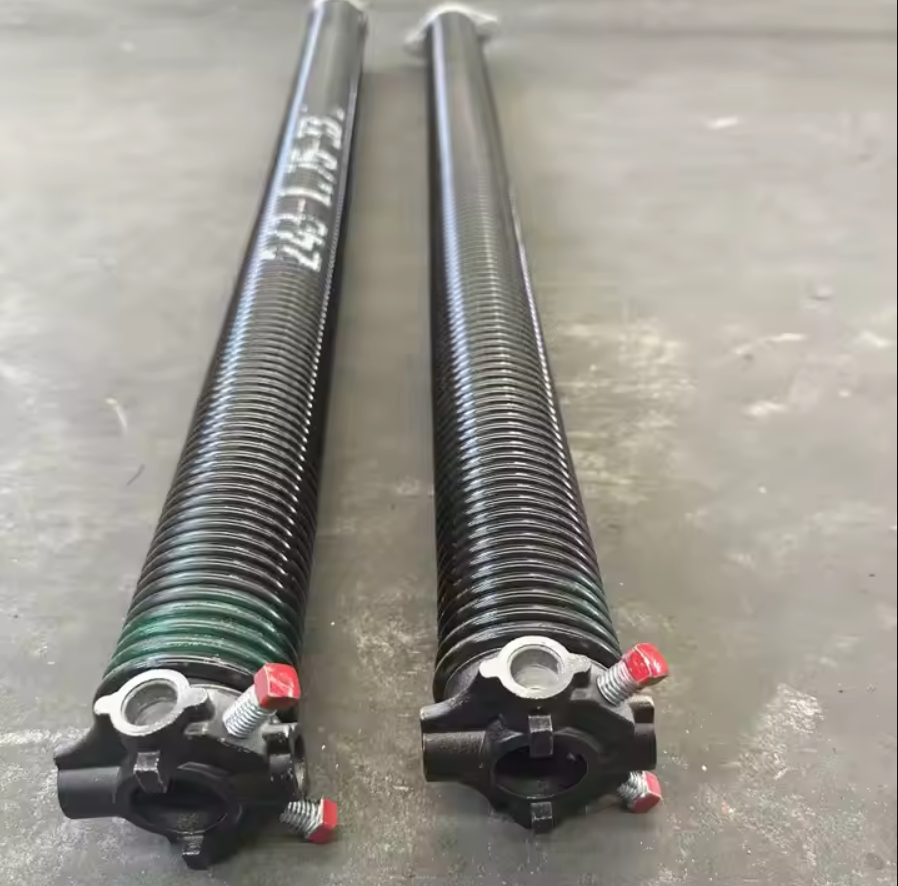- COMMERCIAL GARAGE DOOR REPAIR
- GARAGE DOOR OPENER INSTALLATION
- GARAGE DOOR SPRING REPAIR
- SAME-DAY GARAGE DOOR REPAIR
- CUSTOM GARAGE DOOR
- GARAGE DOOR OPENER REPAIR
- GARAGE DOOR TRACK REPAIR
- GARAGE DOOR CABLE REPAIR
- GARAGE DOOR PANEL REPAIR
- LOCAL GARAGE DOOR REPAIR
- GARAGE DOOR REPLACEMENT
- NOISY GARAGE DOOR FIX
- GATE REPAIR
- GARAGE DOOR INSTALLATION
- GARAGE DOOR SECTION REPLACEMENT
- OVERHEAD GARAGE DOOR REPAIR

Top 3 Causes of Garage Door Spring Failure And How to Prevent Them
Garage door springs are the unsung heroes of your home’s garage system. They handle heavy loads daily, ensuring your garage door opens and closes smoothly. Unfortunately, they don’t last forever. Ignoring signs of wear or misuse can lead to unexpected breakdowns, costly repairs, or even safety hazards.
At Powell Garage Door Repair, we want to help you avoid these issues. Understanding the common causes of garage door spring failure is the first step in prevention. Below, we explore the top culprits and share actionable tips to help you extend the life of your garage door springs.
What Causes Garage Door Spring Failure?
Garage door springs are high-tension components designed to handle frequent use. However, without proper care or when exposed to harsh conditions, they can fail prematurely, leading to the need for garage door spring repair. Let’s take a closer look at three main causes.
How It Happens
1. Wear and Tear
One of the most common reasons behind garage door spring failure is simple wear and tear. Most springs are rated for a specific number of cycles—a “cycle” being one full opening and closing of the garage door. Standard springs typically last about 10,000 cycles, though heavy usage means they wear out faster.
Prevention Tips
- Opt for High-Cycle Springs
Investing in springs with a higher cycle rating can significantly increase their lifespan. For instance, springs rated for 20,000 cycles will last twice as long as standard ones. This is especially worthwhile if your garage serves as a primary entry point.
- Use the Garage Door Wisely
Each time your garage door operates, the springs lose a fraction of their strength. By minimizing unnecessary openings, such as avoiding using your garage as a pedestrian door, you can reduce strain.
2. Lack of Regular Maintenance
How It Happens
Garage door systems require periodic maintenance to function optimally. Without proper care, springs can corrode, lose their elasticity, or break under stress. A lack of lubrication is another major contributor, as dry springs create unnecessary friction and weaken over time.
Prevention Tips
- Lubricate Regularly
Apply a silicone-based lubricant to the springs every three months. This reduces friction, prevents rust, and contributes to smoother operation.
- Schedule Annual Inspections
Have a professional inspect your garage door system annually. Technicians can identify early signs of wear in the springs or other components, allowing for preventative measures before a complete failure.
- Tighten Loose Hardware
Springs work in tandem with cables, brackets, and other hardware. Loose or damaged parts can place uneven stress on the springs, accelerating their wear. Regularly check bolts and screws and tighten them as needed.
3. Environmental Factors
How It Happens
External conditions can significantly impact the lifespan of garage door springs. For instance, exposure to humidity and fluctuating temperatures can cause springs to rust and weaken. Additionally, extreme cold can make the metal brittle, increasing the likelihood of breakage.
Prevention Tips
- Control Your Garage’s Environment
If possible, regulate the temperature and humidity in your garage. Installing insulation or using a dehumidifier can help protect the springs from weather-related damage.
- Choose Rust-Resistant Springs
Some springs are coated with special materials to resist rust and corrosion. If you live in an area with high humidity or frequent snow, consider upgrading to these weather-resistant options.
- Act Quickly if Signs of Rust Appear
Rust can spread quickly, further weakening the spring. If you notice rust spots, have a professional inspect the springs immediately to determine whether repair or replacement is necessary.
How to Keep Your Garage Door Springs in Top Shape
Caring for your garage door springs requires a proactive approach. Here are three key ways to enhance their durability and performance:
- Be Mindful of Unusual Noises
Squeaking or grinding noises often indicate that your garage door system needs attention. Report these signs to a professional to address any underlying issues early.
- Replace Both Springs Together
If one spring breaks, it’s best to replace both springs at the same time, even if the other one seems fine. Springs are typically installed in pairs, so replacing them together ensures balance and prevents additional strain.
- Avoid DIY Repairs
Garage door springs are under extreme tension, and attempting to adjust or repair them without professional expertise can result in severe injury. Always call a trained technician for spring-related repairs.
Final Thoughts
Garage door spring failure can lead to inconvenience, costly repairs, and safety risks. Understanding the causes—like wear and tear, lack of maintenance, and environmental factors—can help prevent these problems. Opting for high-quality springs, maintaining a regular care routine, and managing your garage’s environment are key to extending spring lifespan.
If you think your springs may be failing, don’t wait. Contact Powell Garage Door Repair to assess the situation. Timely maintenance can save you money and ensure the safety and reliability of your garage door system.
